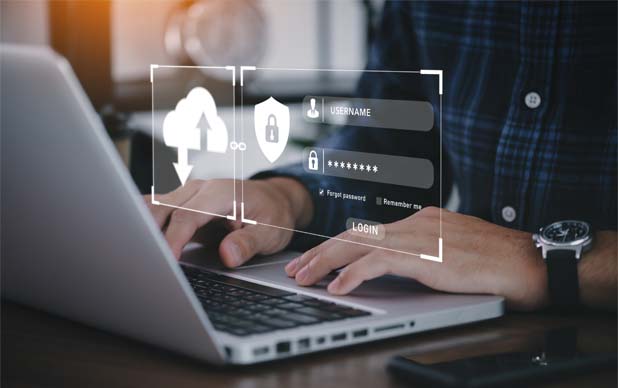Multi-Factor Authentication
Account takeover is fraud when cybercriminals steal another person’s online account information. It can allow them to change the victim’s password, access their credit card information, or commit fraud.
One of the most common ways an account takeover happens is through a data breach. When data is compromised, criminals can easily guess usernames and passwords used to sign in to online accounts.
To prevent this from happening, you should create unique passwords for each account and never share them with unauthorized people. In addition, you should use a password manager to generate and store strong passwords.
Using these tips, you can help protect your business from cyberattacks and keep your customers’ personal information safe. The most effective way to do this is to use a multi-factor authentication solution that requires users to provide more than just their passwords when logging in.
The most effective MFA solutions require users to enter their login credentials and a second layer of verification through a mobile device. This additional factor is inaccessible to cybercriminals who have stolen the user’s primary credential, making MFA a critical component of any security strategy.
MFA also helps protect users from hackers by increasing the time it takes for an attacker to gain access to a user’s account. Moreover, it can prevent up to 99.9% of account compromise attacks that rely on stealing the user’s credentials.
Authentication via SMS
SMS authentication is one of the most commonly used additional factors for two-factor and multi-factor authentication (MFA). This form of security adds a second layer of protection to accounts by verifying users’ identities based on something they possess, like their phones.
This method is easy to use, and it’s convenient to provide extra security for your customers. It’s also a good choice for businesses with sensitive consumer data on their platforms.
However, it’s essential to consider some security risks associated with this method. For starters, it relies on cellular service and can be vulnerable to outages, which means that your users’ accounts may only be secure if they sign in to your website or app.
For this reason, it’s best to use an authenticator app or a physical security key as a second authentication factor instead. These tools don’t rely on cellular service and can work even when the internet is down, making them a much better option for businesses with sensitive information on their platforms.
Another downside to using SMS for authentication is that it’s a weaker security factor than passwords, which are surprisingly vulnerable to hackers who can guess or steal them. Your business needs to be proactive in preventing and defending against account takeover attacks.
Behavioral Detection
Behavioral detection is an effective way to prevent account takeover attacks by analyzing user behavior and flagging anomalies. It uses machine learning and other algorithms to identify unusual activity that could signal an attack. This helps identify threats before they gain a foothold on your network, preventing damage to your business and users.
Using a combination of risk-based authentication, device detection and profiling, IP reputation analysis, and behavioral analytics, behavioral detection can detect suspicious login attempts and stop them before they occur. It also helps track user activity across multiple accounts, identifying account takeover attacks at scale.
To defend against these threats, organizations should implement strong passwords, use multi-factor authentication, and avoid sharing their passwords with unauthorized users. They should also regularly change their passwords and use a password manager to store them in an encrypted format.
Businesses should also use a password recovery service to restore stolen credentials in the event of a data breach. This prevents hackers from gaining access to their customer data or corporate systems.
ATO fraud is widespread in the financial industry, where cybercriminals can use the data they gain from a data breach to extract funds or personal information. It is also a severe threat to e-commerce sites, where they hold sensitive customer information.
Unlike signature-based security, behavioral detection can detect malicious behavior in real-time, allowing businesses to contain and block threats before they can cause harm quickly. Moreover, it can also be integrated with other security solutions to prevent a range of security threats, including malware and phishing attacks.
Monitoring
Account takeover attacks are a type of cybercrime in which hackers steal a victim’s personal information and use it to gain access to their online accounts. These malicious actors then use the stolen data to make purchases, apply for credit cards or loans, and wreak havoc on the victims’ lives.
These attacks can be triggered by various tactics, from simple credential stuffing and phishing scams to sophisticated spear phishing and Man-in-the-middle (MITM) attacks. These tactics enable fraudsters to target and compromise a wide range of accounts, including those belonging to banks, retailers, social media sites, and loyalty programs.
As automation has enabled criminals to commit ATO fraud on a grand scale, businesses of all sizes and industries need to be proactive regarding protecting their credentials. This is especially true of small organizations, who may need to be more vigilant regarding suspicious login, account creation, or password reset activity.
To prevent these threats, business leaders should create security protocols and procedures that involve regular password changes, strong passwords, and the use of a password manager. They should also regularly monitor account activity to identify any unusual activity and report it to their provider as soon as possible.
Logging data can provide a comprehensive view of what’s going on with your system and valuable insights for troubleshooting issues. It’s essential to collect a full range of applicable data, such as resource-usage metrics, timestamps, user IDs, and session IDs. This data can help your monitoring tool understand the issue’s scope and complexity and give you a complete picture of how your users were affected.









